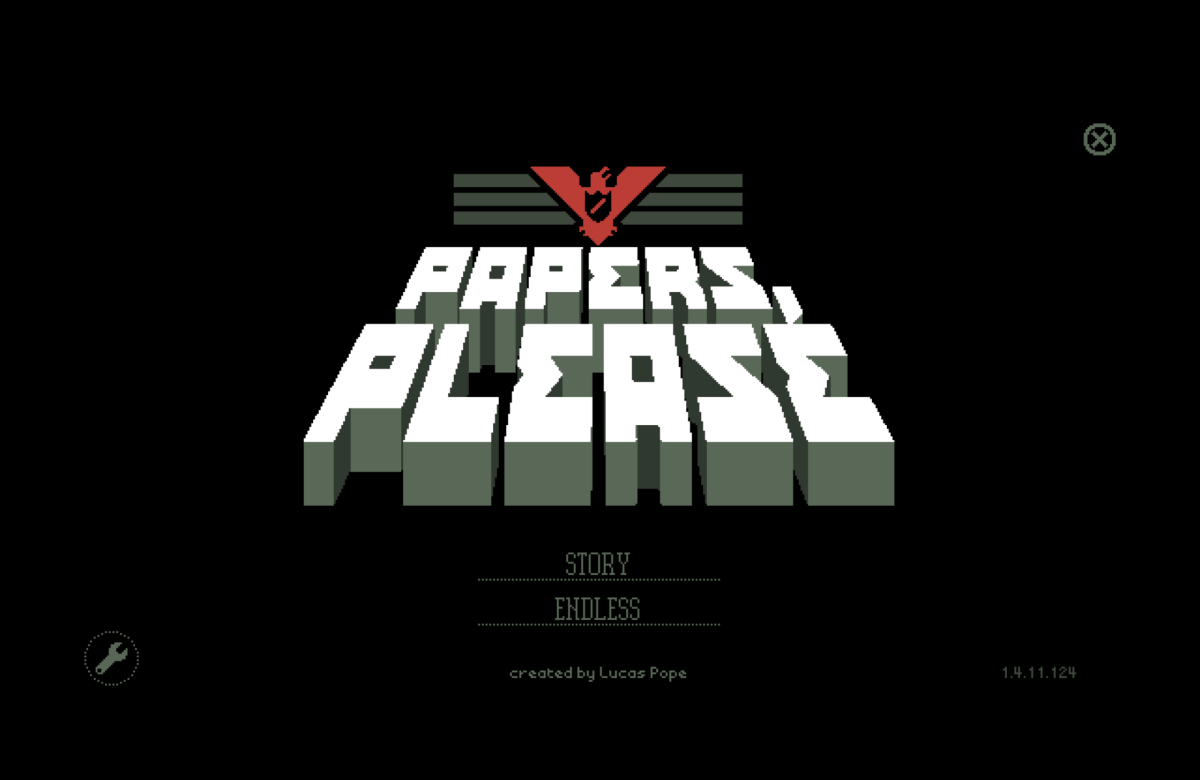This Week in the World: 03/30/2025-4/5/2025
The news is a whirlwind of information that can be difficult to navigate, from finding credible sources and digestible reports to simply finding a place to start. This column serves as your starting place through summarizing current events from the week and providing a few sources if you want to continue your research.
The Organized Immigration Crime Summit:
**Disclaimer: in this context, “conservative” refers to the UK’s Conservative Party.
Summary:
On Monday March 31st the United Kingdom hosted its first major international summit on illegal migration. Over 40 countries participated, including the United States, France, and Iraq, in addition to representatives from X, Meta, and TikTok. According to the official website of the UK government, the summit’s primary purpose was to unite other countries in a coordinated effort to “dismantle people smuggling gangs” as well as working with representatives from social media sites to “jointly tackle the online promotion of illegal migration.” Their principal belief is that cross-border cooperation is the first step toward securing the British border and tackling international gangs.
Context:
Prime Minister Keir Starmer was elected in July of 2024. Immigration was a key issue in the election where he promised to “smash gangs.” In 2022, the previously conservative government announced a plan to deport illegal migrants to Rwanda as a deterrent for illegal migration. The plan ran into legal trouble and ultimately proved ineffective. Upon entering office, Starmer scrapped the deportation plan. Rather, he pushed for globally collaborative efforts to stop internation gangs and to treat illegal migration like terrorism.**
The UK government claims that over 24,000 individuals with “no right to be in the UK” have been deported since July. However, so far in 2025, over 60,000 people have illegally crossed the English Channel in small boats.
** Ok, pause. I was taken aback when I first read that as you may be. So, let’s further contextualize this statement. The major problem with illegal migration in Britain is the international gangs illegally smuggling migrants. He himself said, “And it’s unfair on the illegal migrants themselves, because these are vulnerable people being ruthlessly exploited by vile gangs.” Therefore, when he is referring to treating illegal migration as terrorism, he means treating organized immigration crime such as illegal smuggling by gangs as terrorism. Furthermore, this is a direct reference to his time as the Director of Public Prosecutions where he worked across borders to prosecute terrorists.
Conclusions:
On April 1st the official website of the UK government posted a statement from the representatives of the governments of Albania, Sweden, Tunisia, United Kingdom, United States, and Vietnam on organized immigration crime (OIC). To summarize, the statement acknowledges the online aspect of the threat, commits to collective action and to a collective responsibility.
Sources:
- https://www.gov.uk/government/news/uk-hosts-first-major-international-summit-to-tackle-illegal-migration — used in summary
- https://www.gov.uk/government/news/landmark-summit-agrees-new-measures-against-organised-immigration-crime — summary of discussions
- https://www.reuters.com/world/uk/new-uk-pm-starmer-confirms-end-rwanda-asylum-deportation-scheme-2024-07-06/ — background info on election and Rwanda deportations
- https://www.reuters.com/world/uk/britain-hosts-key-nations-coordinate-fight-against-people-smugglers-2025-03-30/ — more context
- https://www.bbc.com/news/articles/ckg5wkk1g1go — great summarization of immigration as a political issue in the UK and the OIC summit
- https://www.gov.uk/government/news/statement-on-organised-immigration-crime — The full statement of OIC
US Reciprocal Tariffs:
Defining Tariffs:
Tariffs are taxes placed on imported foreign-made goods from other countries. They are paid by the producer to their home country’s government. Trump’s reciprocal tariffs are a type of tariff referred to as ad valorem, the most common type of tariff. This imposes a percent tax based on the projected price of the imported goods. For example, if an imported good is worth $100 but there is a 10% tariff in place, the importer has to pay $10 to their home country. Therefore, the importer is now making a $90 profit instead of a $100 profit.
Almost every country uses tariffs. The primary aim of tariffs is to protect local industries. By upping the prices of foreign made goods, domestic products are more appealing to domestic consumers.
When tariffs cut a foreign importer’s profit, the importer will increase their prices to cover that loss. An increasingly expensive import market can protect domestic products, unaffected by tariffs. Once the competitors’ prices increase, the domestic industry can safely raise their prices without fear of foreign competitors.
In the United States, most “domestic” products include parts manufactured in foreign countries, which would be subject to tariffs. Take Apple, for instance: Most iPhones are manufactured in China. When the phones are imported into America to be sold, they would be subject to tariffs and, consequently, the prices for iPhones would be raised. So, the bulk of tariff costs are pushed to consumers in the form of higher prices.
Tariffs also invite retaliatory tariffs from other countries, which can result in a trade war (US and China, for example) where tariffs and trade barriers are being raised. Once again, this primarily impacts consumers by raising prices and is overall not the best for domestic and global markets.
- https://www.cfr.org/backgrounder/what-are-tariffs#chapter-title-0-6 – a nonpartisan group explaining what tariffs are (also links to a study about how the cost of tariffs are pushed to consumers – I will warn you though, it’s not a fun read)
- https://www.oxfordeconomics.com/resource/tariffs-101-what-are-they-and-how-do-they-work/ – tariffs 101 from Oxford Economics
Trump’s Tariffs:
On Wednesday April 2nd President Trump announced a 10% universal tariff on all foreign imports. Trump levied higher tariffs on many of the United States’ biggest trade partners such as 20% tariff on the European Union, 24% tariff on Japan, and new 34% tariff on China on top of the preexisting 20% tariff, totaling at an effective tariff of 54%.
- https://www.bbc.com/news/articles/c5ypxnnyg7jo – list of countries, their % share of US imports, and % tariff
Mexico and Canada are not included in the above list, but the President levied sweeping 25% tariffs on imports of cars and auto parts that also took effect on Thursday, April 3rd.
President Trump branded April 2nd “liberation day” and his administration continues to affirm that the United States has been unfairly subjected to higher tariffs from other countries and his reciprocal tariffs will even the playing field, reduce trade deficits, and ultimately protect economic and national security.
Many Democrats oppose the tariffs and Trump’s authority to pass them. Democratic Senator of New Jersey Cory Booker took to the Senate floor at 7pm on Monday March 31 and spoke for 25 hours straight to, in his words, protest the Trump Administration’s disregard for the rule of law. Also on Wednesday April 2nd, the US Senate held a largely symbolic vote to cancel the tariffs on Canada.
Another source of controversy that comes up in many articles is that some of the largest tariffs are targeted towards small, low-income countries. For example, the Trump administration levied a 50% tariff on the small southern African nation of Lesotho, one of the poorest countries in the world. Similarly, Madagascar received a 47% tariff and Mauritius a 40% tariff.
President Trump also levied tariffs on the uninhabited Heard and McDonald Islands which has become the subject of ridicule from those opposing the tariffs. According to the US Commerce Secretary Howard Lutnick, the tariffs were meant to close loopholes and prevent countries from shipping through the islands to avoid tariffs. On the other hand, Australian trade minister Don Farrell asserts the tariffs indicate a rushed process and are clearly a mistake.
Economists’ Opinions:
For this section I condensed multiple individual economists’ opinions into general statements.
Many economists point out that tariffs won’t actually reduce trade deficits. First, surpluses and deficits are simply how trade works and implementing tariffs will only shuffle trade deficits and surpluses among countries rather than reduce the overall trade deficit. To close the trade deficit the US should work on closing the budget deficit or reduce investment.
Some economists point out that tariffs won’t increase employment rates in US manufacturing, as is one of the goals of the Trump administration. Rather, it would hurt US manufacturing and reduce US companies’ share in global auto sales and may even decrease employment rates. Also, the tariffs implemented were higher than most people were expecting, leading to uncertainty over corporate investment, seen in the 15% plunge of the stock market.
Some economists argued that the increased prices are the price for increased domestic investment and higher economic opportunity for domestic industries that have been falling behind.
Several economists cited the likelihood of retaliatory tariffs which could push the US into a trade war and harm the global economy. Some think there is a possibility in the Trump administration backing off as a result of retaliatory tariffs. Nevertheless, the general consensus among economic analysts is that the longer the US engages in a trade war, the higher the likelihood of a US recession.
Global Response:
The government of Canada declared retaliatory 25% tariffs on all vehicles imported from the United States that not compliant with the North American Free Trade Agreement. Unlike the United States’, these tariffs won’t affect auto parts.
French president Emmanuel Macron called the tariffs “brutal and unfounded” and urged companies to pause investment in the US until there is more clarity on the tariffs. He stated that continuing these investments while facing these penalties [the tariffs] will send the wrong message.
Instead of taking retaliatory measures, Japanese Prime Minister Shigeru Ishiba says he has no intention of engaging in direct confrontation. Rather, the Prime Minister is calling for a more diplomatic and fact-based approach, especially with allegations of Japan charging a 700% tariff on rice products from the United States. His aim is to work with the Trump administration to hopefully get rid of or reduce the new tariffs.
China has a very different approach. China retaliated with a 34% tariff on the US, matching the tariff levied by the Trump administration. President Trump warned he would retaliate with an additional 50% tariff (putting the total at 104%) but China responded by vowing to “fight to the end.” Now in a full force trade war, both the US and China are refusing to back down. As US-China trade expert Mary Lovely put it, “What we are seeing is a game of who can bear more pain. We’re stopped talking about any sense of gain.” The trade war between China and the US is a major global concern as it involved the world’s largest exporter and its most important market. For both China and the US, the future is unclear.
Sources:
This does not include links already in the text. The bolded links are the sources I think you should prioritize looking at.
- https://www.npr.org/podcasts/500005/npr-news-now — source of most general information included
- https://www.wsj.com/livecoverage/trump-tariffs-trade-war-stock-market-04-03-2025 — impact on the stock market. A lot of important information/statistics on economic impact but a lot of economic talk which may be harder to understand without background info
- https://www.bbc.com/news/articles/c0qnd2x1nn3o — good summary of what the tariffs are and their impacts
- https://www.whitehouse.gov/presidential-actions/2025/04/regulating-imports-with-a-reciprocal-tariff-to-rectify-trade-practices-that-contribute-to-large-and-persistent-annual-united-states-goods-trade-deficits/ — this and the one above it are official statements from the White House about tariffs
- NOTE: Despite having important information about the Trump administration’s arguments and decision making, it is rough read. I suggest finding a summary if possible.
- https://ustr.gov/countries-regions – compilation of Economists from different organizations opinions on the tariffs
- https://www.piie.com/blogs/realtime-economics/2025/piie-experts-react-trumps-tariffs-announced-april-2 – compilation of economists from the Peterson Institute for International Economics
- https://timesofindia.indiatimes.com/world/us/did-donald-trump-announce-reciprocal-tariffs-on-penguins-here-is-the-truth/articleshow/119944002.cms – very aggressive critique of Donald Trump and tariffs
- NOTE: this source is VERY BIASED and was used as an example of harsh critiques and ridicule of Trump’s tariffs
- https://www.bbc.com/news/articles/ce84jr5mvnno — about tariffs on uninhabited islands and includes statements from US officials and Australian officials
- https://insights.som.yale.edu/insights/the-trump-tariffs-are-paralyzing-business-investment – more economic insights
- https://www.japantimes.co.jp/business/2025/04/07/economy/tariffs-political-reax/ — Japan Times article about the Prime Ministers response
- https://www.bbc.com/news/articles/ckg51yw700lo — US-China trade war
Space X Crew Launch:
Ok that was a lot of information. Let’s end the column with a scientific development from the week.
On Monday March 31st a crew of four private astronauts launched from the Kennedy Space Center in Florida on a historic mission to orbit the Earth’s polar regions. The SpaceX crew, named Fram2, is led by crypto magnate Chun Wang and the crew includes Norwegian cinematographer Jannicke Mikkleson, German engineer and polar scientist Rabea Rogge, and explorer of Earth’s polar regions, Eric Philips. They are the first human spaceflight to orbit the earth’s poles. The crew plans on performing 22 experiments while in orbit such as testing the first x-ray in space and growing mushrooms.
Here are a list of articles that talk about the SpaceX flight
** Almost every source used was evaluated with Ad Fontes Media’s graph of different sources’ reliability and political bias. (The sources from certain economic journals are not included in the graph.)


















